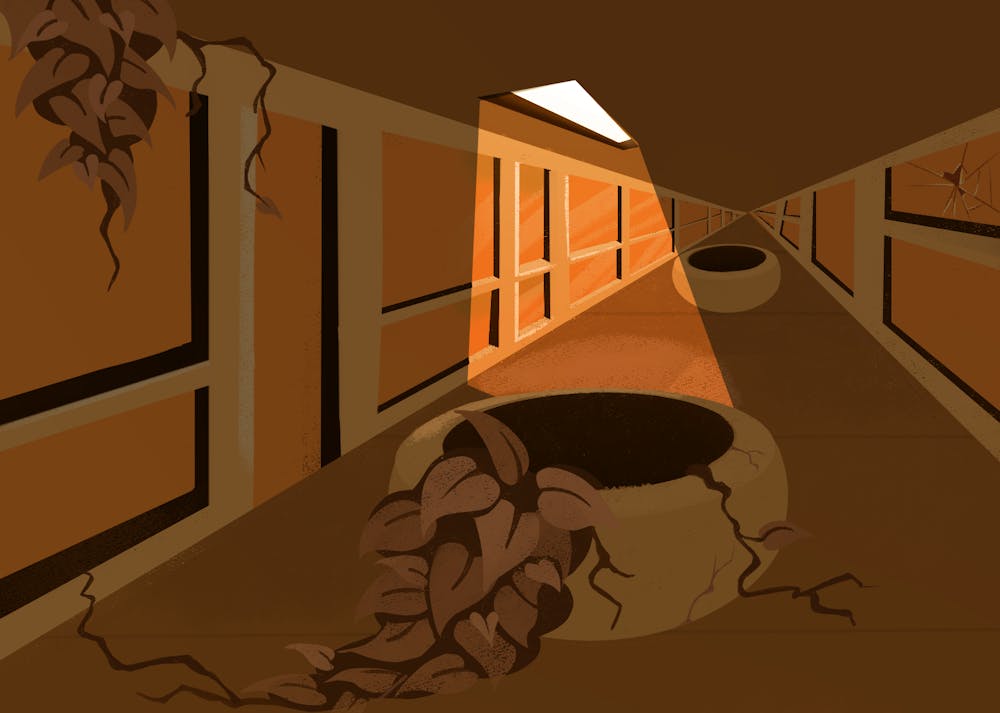A sad image is floating around in media and film in recent years. An empty, abandoned shopping mall. A shell of the busy, bustling activity that once took place within. More and more of these commercial hubs are shutting down forever, as less shoppers turn to their stores for goods. But where are these shoppers going?
"It was not simply shopping, it was a destination trip to go shopping," said Tiffanny Rauch, an administrative assistant for ASU NewSpace. "The mall is no longer a destination of fun for me."
According to Statistica, the vacancy rate of malls and similar shopping structures reached over six percent and over 5,000 stores were closed by bankrupt mall-based retailers in 2020 alone.
Millennials and Gen Z are leaving behind the one-size-fits-all mentality of earlier generations, perpetuated by generic, cookie-cutter malls filled with a handful of similar shops and restaurants.
A vestige of the 90s and early 2000s, the shopping mall experience has been abandoned in favor of unique corner boutiques and hole-in-the-wall restaurant finds. Much less concerned with similitude, young people today are searching for individual consumer experiences that fit their own unique style and personality.
"I think people are feeling more empowered to be themselves," Rauch said. "Now … standalone stores that have a range of merchandise have taken over the old time mall shopping experience."
This is only one of many reasons that mall culture is fading.
In theory, a person can walk into a mall and, surrounded by any number of glittering name brands and commercial entities, completely lose all sense of time and space. Am I in Tempe Marketplace down the street, or Brea Mall in Southern California? Who can say? And what time is it, anyway?
Reminiscent of the absence of clocks or windows in a casino, these marketing tactics are sinister, encouraging consumers to shop and never stop shopping. Some would say this is the point of a mall — I would say this is concerning.
These large, commercial shopping outlets are the epitome of mass consumerism, and society is gladly doing away with them. But Sofia Reiland, a senior studying biomedical sciences, and a proud thrifter, warns of history repeating itself.
"I don't know if mall culture dying out is bad, necessarily, but I do think there are a lot of problems with replacing it … with even more mass consumption," said Reiland.
Online shopping and "fast fashion" — an affordable, yet unsustainable, business model – are more prominent than ever.
READ MORE: Mindful Garments: Sustainable fashion at ASU
"I think the biggest thing is the accessibility of online shopping in terms of both cost and location," said Genexis Ramirez, a senior studying English and philosophy, and a frequent online shopper.
Online shopping also rose in prevalence due to the COVID-19 pandemic.
"We were restricted and we couldn't go out," said Ramirez. "Amazon especially became another contributor to clothing."
Estimates made by Coresight Research mid-pandemic in 2020 predicted that 25% of the country's approximately 1,000 malls would close. As of last year, there were roughly 700 malls still operating.
Ramirez also believes social media is shaping our generation's sense of fashion and identity, and influencing us to shop in new ways.
"I think it's … by far the largest contributor to how teenagers now are more adept at picking more fashionable choices," said Ramirez.
On every social media platform, we are persuaded by influencers to purchase this new fashion piece or that new makeup brand. Our whole world is now a Pinterest board.
With all of these new factors, from social media to the rise of online shopping, consumers are being pulled away from malls one by one, leading to its slow and painful demise.
"Mall culture, once upon a time, was a full recreational experience," said Rauch. "People watching, mall food, hanging out and cruising with friends was all a part of the experience."
This same culture of social fun still exists, but in a different setting, like Tempe's own Mill Avenue.
When I first moved to Tempe – mid-summer, I might add – I was struck by the constant foot traffic on Mill Avenue. Even during the hottest months, the busy street was always flush with visitors, pursuing any number of experiences, whether it be shopping, dining or nightlife. Each independent shop attracts its own array of customers and brightens the city as a whole.
In these locations, one is able to interact with real people who take pride in their businesses and are interested in building lasting relationships with customers. They are more than just warm bodies in corporate uniforms, only interested in getting their paycheck at the end of the week.
It is these experiences I crave. These moments of connection in a world that spins much too fast. I want to walk into a place of business where the workers actually know my name — and I know theirs.
Mall culture still exists, but in places dedicated to creating a welcoming, social atmosphere for visitors.
Edited by Claire van Doren, Reagan Priest and Grace Copperthite.
Reach the reporter at myarmst2@asu.edu.
Like The State Press on Facebook and follow @statepress on Twitter.
Continue supporting student journalism and
donate to The State Press today.




